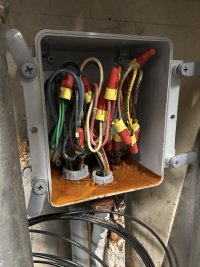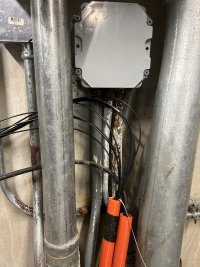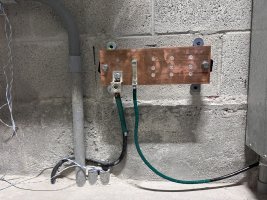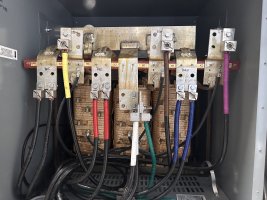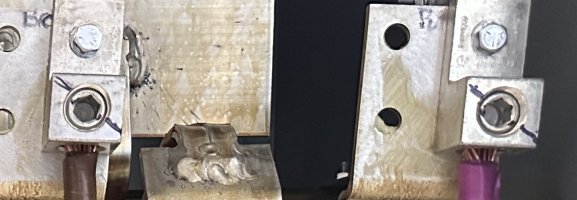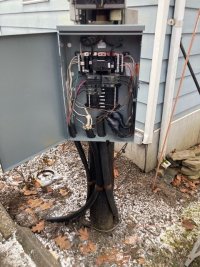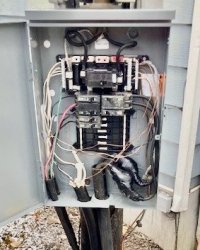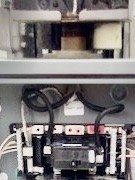225.27
Raceway Seal. Where a raceway enters a building or structure from outside, it shall be sealed. Spare or unused race-ways shall also he sealed. Sealants shall be identified for use with cable insulation, conductor insulation, bare conductor, shield, or other components.
230.8
Raceway Seal. Where a service raceway enters a building or structure from an underground distribution system, it shall be sealed in accordance with 300.5(G). Spare or unused race-ways shall also be sealed. Sealants shall be identified for usewith the cable insulation, shield, or other components.
300.5(G)
Raceway Seals. Conduits or raceways through which moisture may contact live parts shall be sealed or plugged at either or both ends. Spare or unused raceways shall also be sealed.Sealants shall be identified for use with the cable insulation,conductor insulation, bare conductor, shield, or other components.
300.50(F)
Raceway Seal. Where a raceway enters from an under-ground system, the end within the building shall be sealed with an identified compound so as to prevent the entrance of moisture or gases, or it shall be so arranged to prevent moisture from contacting live parts.
300.50(F) could be used to argue that conduits the enter from underground with both ends within the building are required to be sealed. One application that comes to mind is conduit below a methane barrier.
300.7(A) sorta fits the condition and sorta not.
300.7(A) Raceways Exposed to Different Temperatures.
Sealing. Where portions of a raceway or sleeve are known to be subjected to different temperatures, and where condensation is known to be a problem, as in cold storage areas of buildings or where passing from the interior to the exterior of a building, the raceway or sleeve shall be sealed to prevent the circulation of warm air to a colder section of the raceway or sleeve. Sealants shall be identified for use with cable insulation,conductor insulation, a bare conductor, a shield, or other components. An explosion proof seal shall not be required for this purpose.

